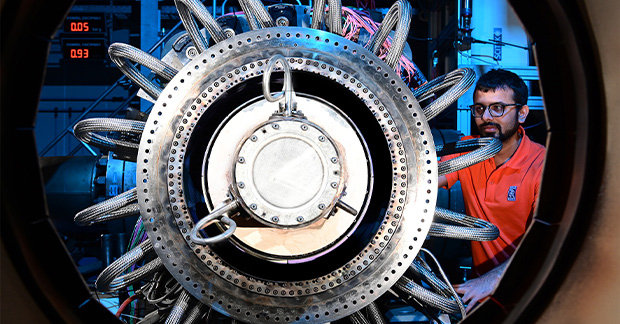Here’s how airlines are bringing comfort back to economy class
From lie-flat beds to readily-available vegan meals, airlines are bringing little luxuries back to economy class

From Michelin-starred food to wellbeing zones, passengers flying in economy are getting an upgrade, reports Alice Barnes-Brown
Board the plane, turn right, take your seat and switch on the screen in front of you: when flying economy, clients know exactly what to expect. Meal services and seat space have been slashed in recent years, but as the aviation industry recovers from the pandemic – this year’s flight capacity surpassed that of 2019 in October, according to aviation analytics firm Cirium – passengers are expecting more from their inflight experience.
Plus, with new super-long-haul routes meaning upwards of 15 hours in the air, airlines are seizing the opportunity to make flying economy a more appealing prospect. From better sleep at 35,000 feet to new menus, these innovations promise to change flying for the better.

Skynest
Coming in September 2024 is Air New Zealand’s revolutionary ‘Skynest’, offering passengers in Economy the chance to get 40 winks in a proper lie-flat bed. Two rows of three bunks, stacked atop one another, will be situated in the middle section of a select few Air New Zealand Dreamliners, flying the Auckland-New York and Auckland-Chicago routes. Each passenger is eligible to buy a four-hour sleep slot for around £200-£300 (on top of their Economy fare).
They’ll clamber into a subtly mood-lit bed pod – the soft lighting changes with cabin conditions – before pulling across the privacy screen, plugging in their devices to a USB port, then getting under the covers for some rest. The Skynest isn’t the first sleep-based innovation from Air New Zealand.
In 2011, it introduced (and patented) the ‘Skycouch’, which allowed passengers to book a row of three seats to themselves and old up cushioned legrests to create a sofa-style seat. Other airlines such as All Nippon have since used the Skycouch design and Lufthansa is looking to introduce it in its new ‘Allegris’ cabins by 2025.
Wellbeing zone
‘Project Sunrise’ – Qantas’s ultra-long-haul direct flight offering from Sydney to London, New York and more – means a new batch of Airbus A350s. The new fleet gave the airline the opportunity to rethink passenger comfort: besides installing fewer seats for more space, the galley area between Economy and Premium Economy has been totally reconfigured to include a ‘Wellbeing Zone’.
As well as a refrigerator where both Economy and Premium Economy passengers can help themselves to water bottles, juices and healthy snacks, the space by the emergency exit will have a dedicated space to stretch out, with plane-friendly stretches shown on a touchscreen TV and padded walls to lean on for support.
“We spent just as much time on the second half of the aircraft as we did the front; we started studies on the Wellbeing Zone before any other area of the A350,” says Qantas chief executive Alan Joyce. With Project Sunrise departures beginning at the end of 2025, innovative features like this could certainly make 22 hours in the air much more comfortable.

Menu upgrades
The pandemic put airlines into survival mode, but some are starting to splash out on making the economy meal service more delicious. Meals by top chefs are back on the menu: from 2024, Economy Class passengers on Taiwanese carrier China Air will be able to munch on a menu curated by a three-Michelin-starred restaurant. On Eva Air, another Taiwanese carrier, Economy Class passengers can opt to sample the delectable delights of Business Class for a small fee. Plant-based options on board are rapidly improving too.
This August, Cathay Pacific unveiled a plant-based menu by Hong Kong restaurant Veda, featuring Indian and Chinese favourites. Best of all, passengers on Cathay won’t have to pre-order a vegan or vegetarian meal – an increasing industry focus on wellness and sustainability means putting planet-friendly options front and centre.
Things are also looking up on the ground. In 2022, Emirates opened the world’s largest hydroponic farm, aiming to produce one million kilogrammes of leafy greens (think salads and spinach) per year, with the fresh produce ending up in meals across all cabin categories.
Free Wi-Fi
There’s no denying customers are craving free Wi-Fi. A passenger survey by satellite provider Immarsat this year revealed that 77% said inflight Wi-Fi was important to them – up from 51% in 2018. Previously the preserve of the premium classes, complimentary Wi-Fi is starting to be rolled out to all passengers. North American airlines are leading the charge: JetBlue has offered free Wi-Fi to all passengers since 2017.
Stateside-bound clients can rejoice: earlier this year, Delta announced plans to roll out free, unlimited Wi-Fi on all international flights by the end of 2024. Other airlines have made moves towards offering free Wi-Fi too – Singapore Airlines began introducing the service in July 2023. And with carriers like Qatar Airways set to provide free Wi-Fi to passengers in all cabins through high-speed satellite service Starlink, the days of flying offline could be numbered…

Innovations in sustainability
The race to make aviation net zero by 2050, a goal set by IATA, is on – even among Europe’s low-cost airlines. In September, easyJet announced it was teaming up with Airbus and Rolls-Royce to investigate hydrogen as a zero-carbon fuel source, while in October, Ryanair purchased 500 metric tonnes of sustainable aviation fuel – enough to power 100 Dublin-Vienna flights.
PICTURES: Weigelt@photographersatwork.com
Read more
Top 5 sustainable hotels in Turkey
Grindelwald is going green – how this Swiss ski resort prioritises sustainability
How Sani Resort sets a standard for sustainable holidays in Greece

 MikeTyes
MikeTyes 























.jpg?trim=0,147,0,146&width=1200&height=800&crop=1200:800)







